
A Forum Of Ideas And Practice
Architektoniczki participated in A Forum of Ideas and Practice in Gdańsk, where Ewelina Jaskulska delivered a presentation on the gender perspective in
in urban areas and
architecture built on
authentic approach
Challenges gender biases and inequalities, creating inclusive and safe cities and urban environments for all.
Promotes women's participation in shaping cities, amplifying their influence and ensuring their needs are considered.
Acknowledges intersectionality and works towards social justice in cities by addressing gender, race, class, ableism and other social factors.


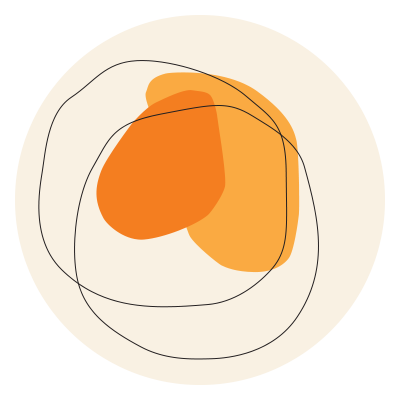




 Slow and shared mobility 1 of 14
Slow and shared mobility 1 of 14
 micro mobility-ready connections 2 of 14
micro mobility-ready connections 2 of 14
 public transport 3 of 14
public transport 3 of 14
 free zone 4 of 14
free zone 4 of 14
 service zone 5 of 14
service zone 5 of 14

transition zone
6 of 14 local commerce 7 of 14
local commerce 7 of 14
 eyes on the street 8 of 14
eyes on the street 8 of 14
 gender, age & ability equitable places 9 of 14
gender, age & ability equitable places 9 of 14
 multigenerational play elements 10 of 14
multigenerational play elements 10 of 14
 public health interventions 11 of 14
public health interventions 11 of 14
 permeable surfaces 12 of 14
permeable surfaces 12 of 14
 microforests 13 of 14
microforests 13 of 14
 microforests 14 of 14
microforests 14 of 14
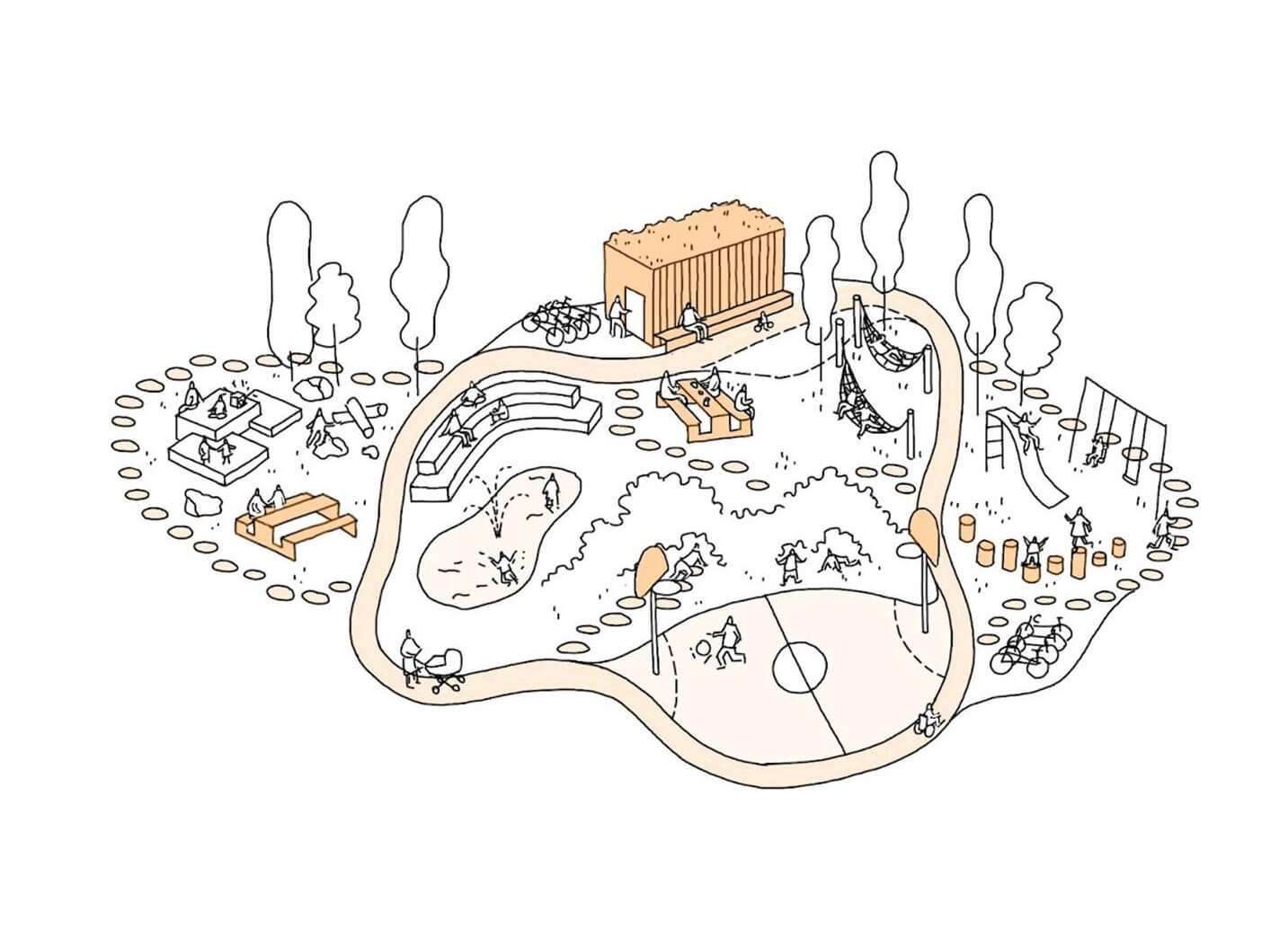
 parking for slow mobility vehicles 1 of 11
parking for slow mobility vehicles 1 of 11
 parking for slow mobility vehicles 2 of 11
parking for slow mobility vehicles 2 of 11
 public toilets and toy rental space 3 of 11
public toilets and toy rental space 3 of 11
 path connecting different zones of the park 4 of 11
path connecting different zones of the park 4 of 11
 irregular shape of MUGA – multi-use play game area 5 of 11
irregular shape of MUGA – multi-use play game area 5 of 11

flexible and mobile structure – age, gender, ability ready
6 of 11 gender neutral play spaces 7 of 11
gender neutral play spaces 7 of 11
 active zone, regardless of age 8 of 11
active zone, regardless of age 8 of 11
 the stage – a common place for local community and local festivity 9 of 11
the stage – a common place for local community and local festivity 9 of 11
 teen girls friendly space 10 of 11
teen girls friendly space 10 of 11
 biologically cative spaces (70%) 11 of 11
biologically cative spaces (70%) 11 of 11

 The entire courtyard is semi-private, open to the neighbourhood 1 of 15
The entire courtyard is semi-private, open to the neighbourhood 1 of 15
 Soft edges between paved and unpaved 2 of 15
Soft edges between paved and unpaved 2 of 15

Gender/age & ability equitable spaces
3 of 15
Micro-mobility ready, with parking for bikes, scooters, cargo bikes
4 of 15
Flex-tures – flexible urban structures
5 of 15
Eyes on the street
6 of 15 local commerce 7 of 15
local commerce 7 of 15

groundfloor easly accessible apartments for elderly and disabled
8 of 15
Active play
9 of 15
Engaging youth & older people gender-neutral play area
10 of 15
Community space for events/birthdays
11 of 15
Urban farming
12 of 15
Recycling center
13 of 15
Post boxes
14 of 15 Covered bike parkings 15 of 15
Covered bike parkings 15 of 15
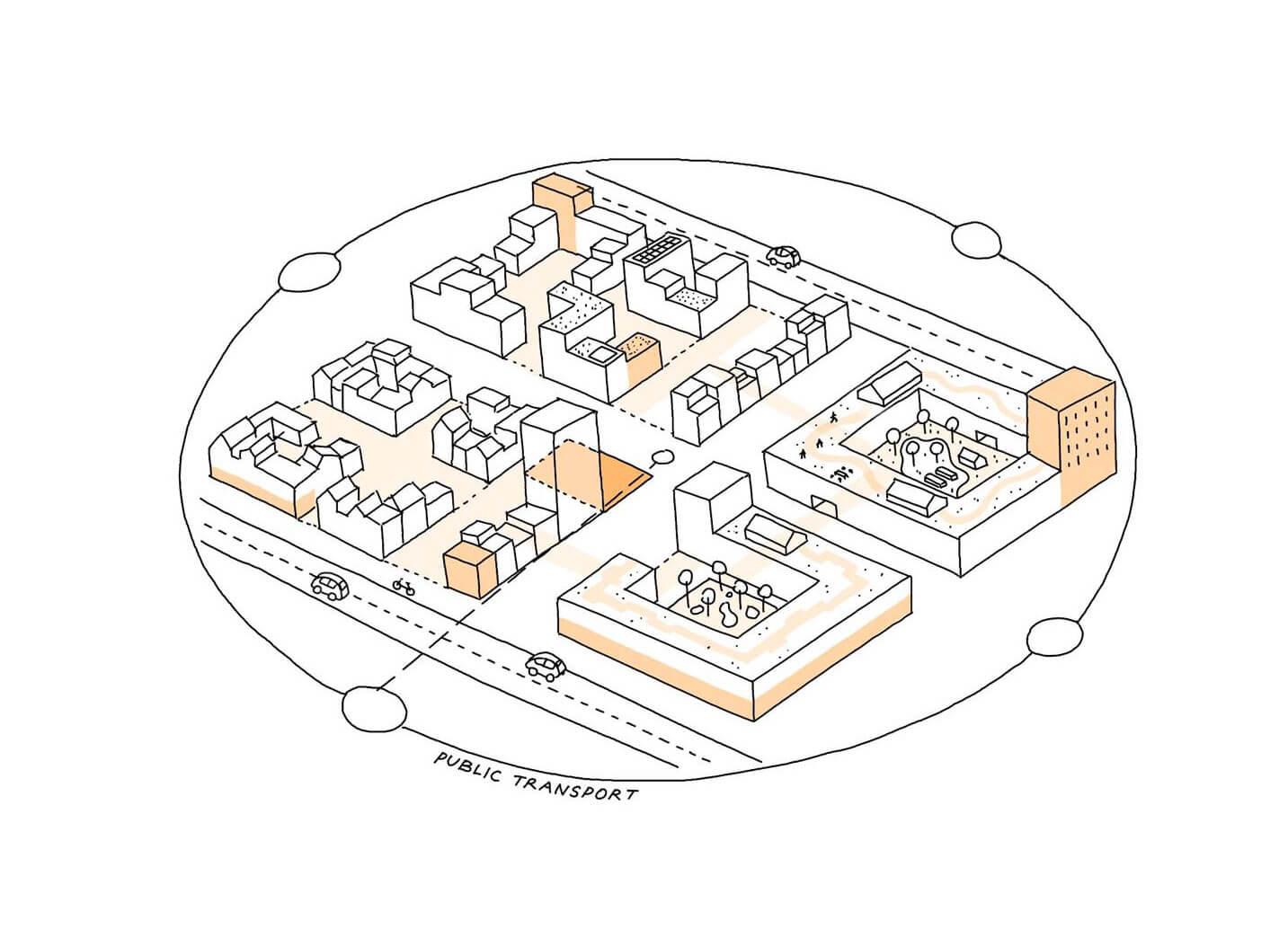
 ’The commons’ – open door main space for local community building
with core services and functions according to the scale
and density of the community 1 of 9
’The commons’ – open door main space for local community building
with core services and functions according to the scale
and density of the community 1 of 9
 Woonerf streets – shared streets with single level, 30km/h, with paths for micro mobility and with restricted access for mechanized transport 2 of 9
Woonerf streets – shared streets with single level, 30km/h, with paths for micro mobility and with restricted access for mechanized transport 2 of 9
 Building quarters 3 of 9
Building quarters 3 of 9
 Access to public transport every 250m 4 of 9
Access to public transport every 250m 4 of 9
 Programming and functional diversity 5 of 9
Programming and functional diversity 5 of 9
 Streetscaping and street facades 6 of 9
Streetscaping and street facades 6 of 9
 Complete streets 7 of 9
Complete streets 7 of 9
 Semi-open courtyard spaces 8 of 9
Semi-open courtyard spaces 8 of 9
 Various types and sizes, sustainable architecture 9 of 9
Various types and sizes, sustainable architecture 9 of 9
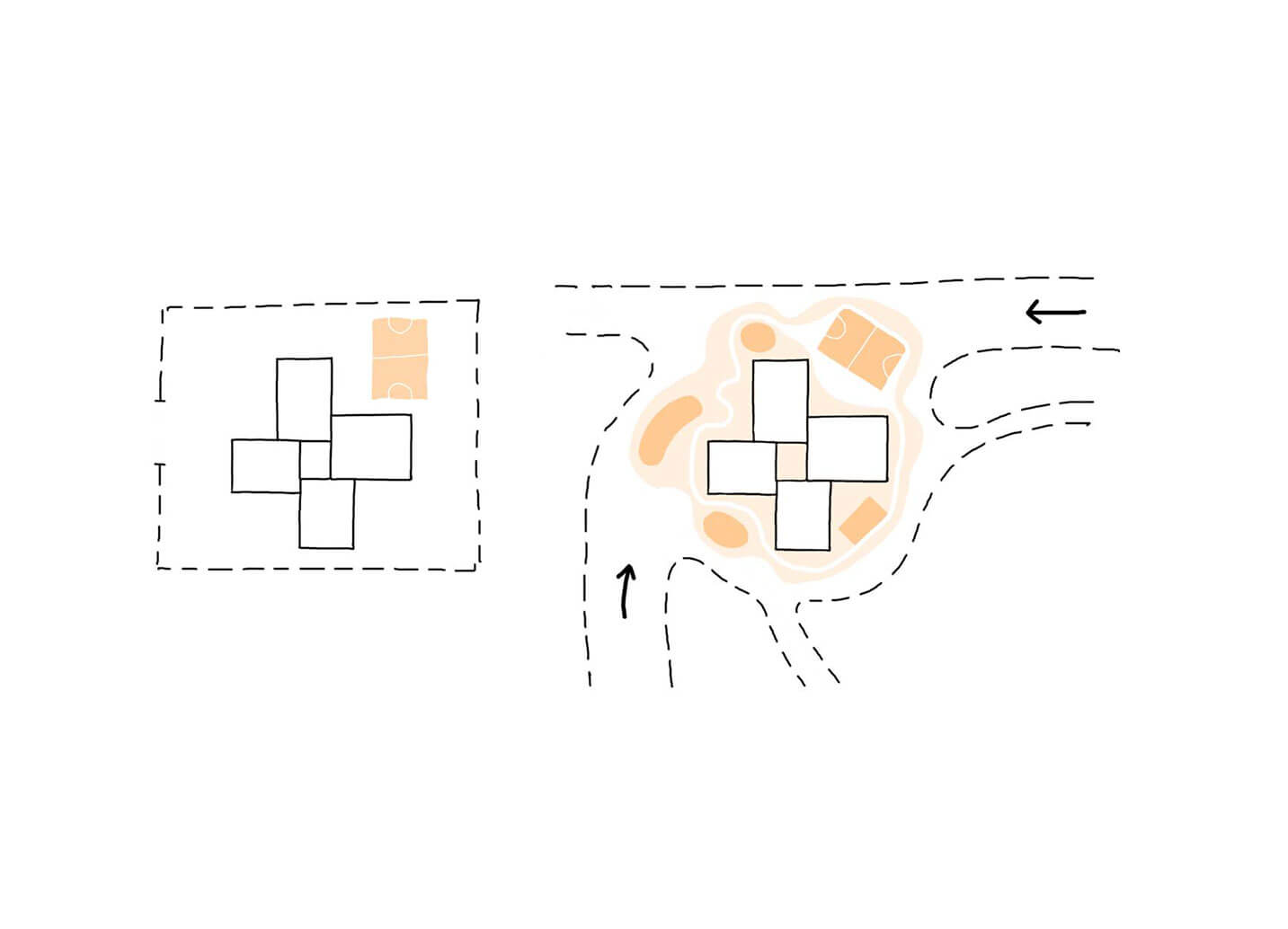
 open to the neighborhood 1 of 7
open to the neighborhood 1 of 7
 gender, age and ability neutral zones 2 of 7
gender, age and ability neutral zones 2 of 7
 equal-space sequence is a path connecting all of the zones
of the schoolyard 3 of 7
equal-space sequence is a path connecting all of the zones
of the schoolyard 3 of 7
 MUGA – multi-uze play area for active plays, with irregular shape, not
dominating the courtyard, with soft edge for other uses 4 of 7
MUGA – multi-uze play area for active plays, with irregular shape, not
dominating the courtyard, with soft edge for other uses 4 of 7
 baskteball baskets of various sizes placed along paths to enabled
more informal play areas for more public 5 of 7
baskteball baskets of various sizes placed along paths to enabled
more informal play areas for more public 5 of 7
 nature area for experimentation and outdoor classes 6 of 7
nature area for experimentation and outdoor classes 6 of 7

passive leisure zone
7 of 7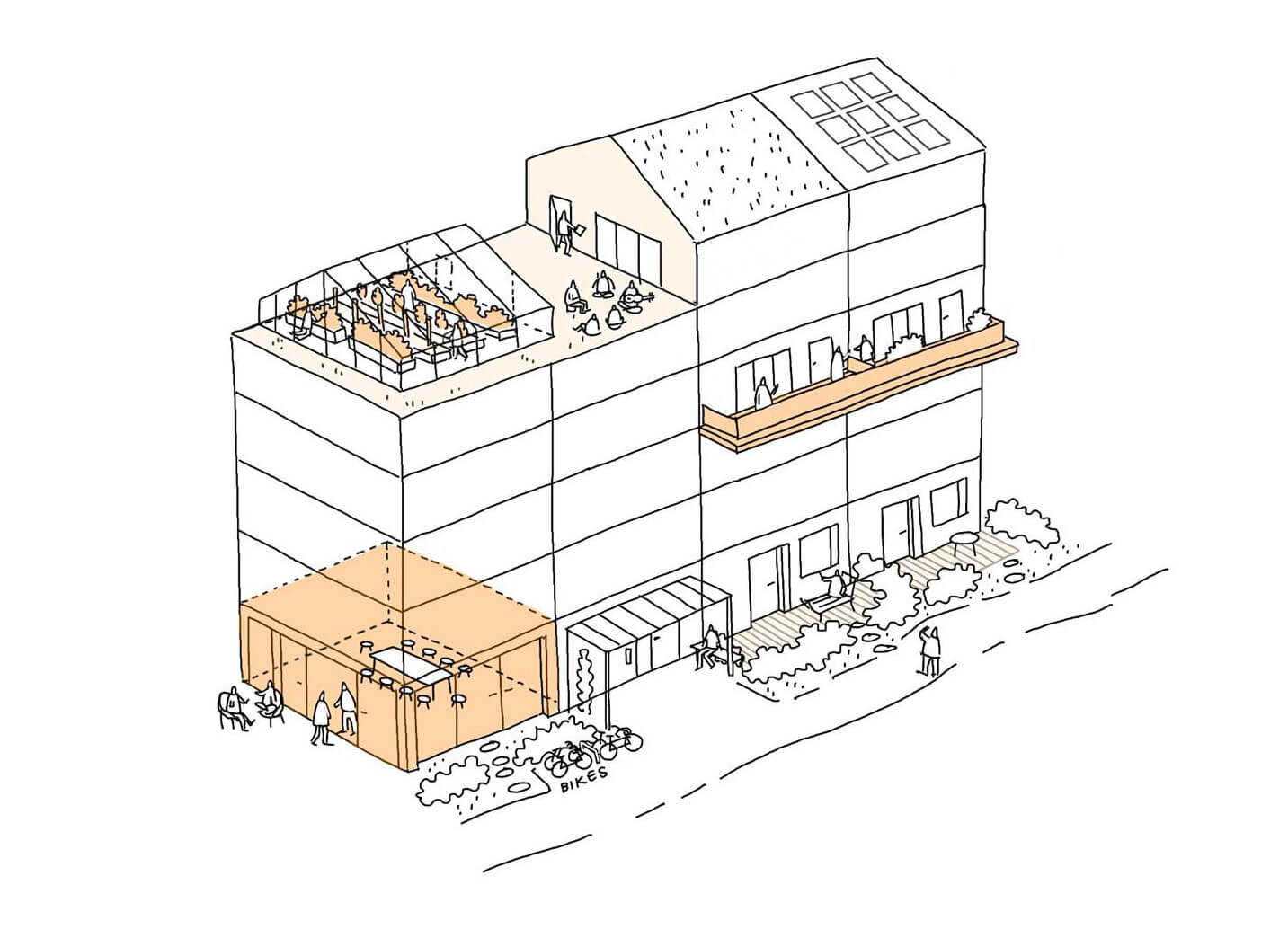
 Accessible roof for food production 1 of 11
Accessible roof for food production 1 of 11
 Accessible roof for community common space 2 of 11
Accessible roof for community common space 2 of 11
 Green roof 3 of 11
Green roof 3 of 11
 Energy production 4 of 11
Energy production 4 of 11

Private units: with private extended outdoor space of a generous size
5 of 11 Engaging groundfloor entrance with micro-mobility parking, 6 of 11
Engaging groundfloor entrance with micro-mobility parking, 6 of 11
 Engaging groundfloor entrance with bench for socialising 7 of 11
Engaging groundfloor entrance with bench for socialising 7 of 11
 Engaging groundfloor covered entrance 8 of 11
Engaging groundfloor covered entrance 8 of 11
 Ev charging station 9 of 11
Ev charging station 9 of 11
 Multifunctional social space open for the neighbourhood with: common kitchen, coworking space, meeting space, events space, laundry 10 of 11
Multifunctional social space open for the neighbourhood with: common kitchen, coworking space, meeting space, events space, laundry 10 of 11
 Groundfloor apartments easily accessible for elderly and disable, provide eyes on the street 11 of 11
Groundfloor apartments easily accessible for elderly and disable, provide eyes on the street 11 of 11


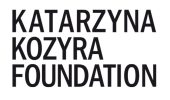
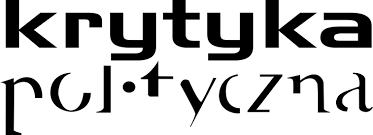





Architektoniczki participated in A Forum of Ideas and Practice in Gdańsk, where Ewelina Jaskulska delivered a presentation on the gender perspective in
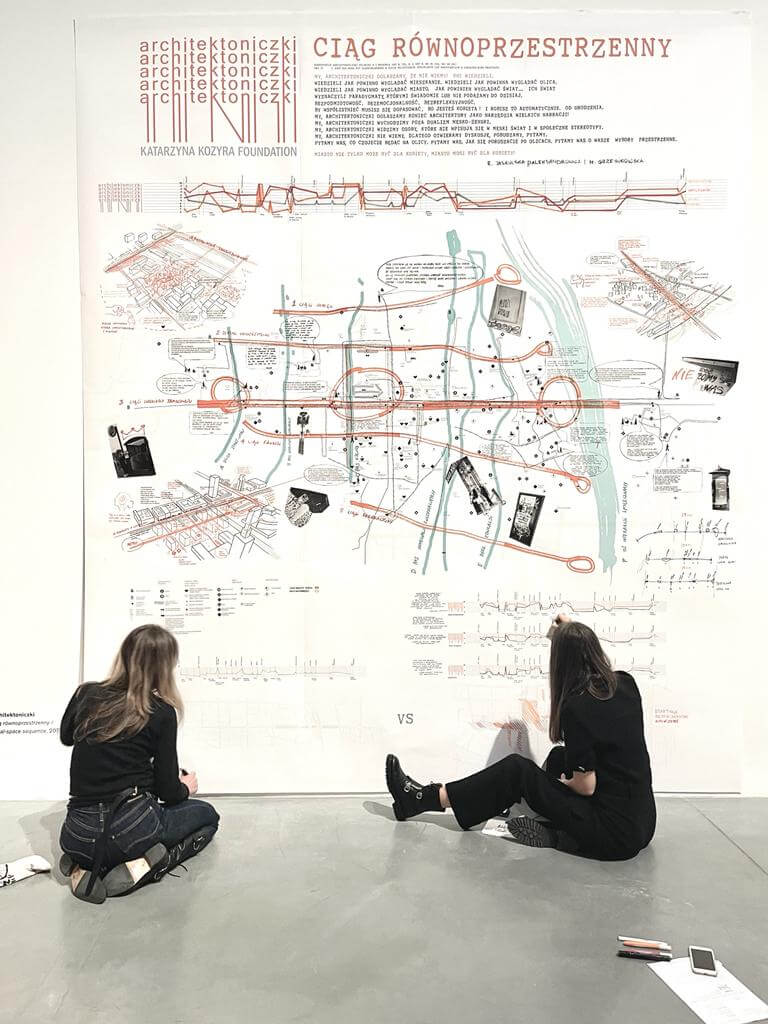
The Street Fight exhibition, held at the Museum of Modern Art in Warsaw from October 2022 to January 2023, explored the role

Analysis of the preschool space and guidelines for the project of the first equal school in Poland, Zyrardow
Workshops about equal space for school students classes 3,4,8